The 14th INTERNATIONAL DAAAM
SYMPOSIUM “Intelligent Manufacturing & Automation: Focus on Reconstruction
and Development”, 22-25th October 2003
OPTICAL COMPARISON OF REPRODUCTION
IN THE CLOSED GRAPHIC SYSTEMS
Mahovic, S.; Mandic, L.; Agic, D. & Gojo, M.
Abstract: Modernization of the graphic
production caused the appearance of different input and output units
in the systems of graphic reproduction. Each of them has the same
goal to obtain the reproduction true to original reproduction. Different
proofing systems are used today for quality control and they play
important role in communication between the client and the printer.
They are used mostly as a kind of “contract” by which the ordering
party accepts and permits the printing of products. From these reasons
color management in each particular system as well as its standardizing
is necessary.
Key words: ink jet proof, analogue proofing system,
CTP system,
print quality, colour management.
1. INTRODUCTION
Contemporary input and output devices for graphic reproduction
of an image comprise the computer with the adequate program support
as the input unit. Color printers, digital and conventional printing
machines are used as the output units. During the image information
transfer onto the corresponding output, changes in color reproduction
are possible, because of different working principle of the device
(Agic et al., 1999). Before the long run reproduction, as well as
shorter ones with great quality demands, proofs are produced. They
enable the control of colour and text reproduction and eventual error
corrections before the printing process. In dependence on the proofing
device impressions are obtained with determined deviations in colorimetric
characteristics of inks, from the original and offset printing (Mandic
et al., 2001).
This paper tries to determine which proofing device gives reproductions
true to offset prints. The device, giving better reproductions, could
be used for more secure impression control and as the evidence of
the correct reproduction. Computer generated original is reproduced
on different proofing devices and in the offset technique with Computer
to Plate (CTP) system for printing form production. Densitometric
and spectrophotometric measurements determine the deviation of the
proofs from the realized reproduction in offset and try to estimate
which of the systems is more adequate and more appropriate for the
realization of the defined demands in the reproduction quality.
The proofing device based on ink jet technology and analogue proofing
device are used in investigation. The proofing devices based on ink
jet technology enable direct production of proofs from the computer.
Ink jet devices enable the ink transfer onto the paper by means of
nozzles. The system ‘drop on demand’ defines the ink droplet by means
of the so-called piezo printing heads. The output information deforms
the piezo ceramics, which squeezes the ink from the printing heads.
The nozzles are very thin and closely concentrated. The ink dries
very quickly on the paper so there are no essential changes on the
reproductions. Analogue proofing device enables the obtaining colour
reproduction of continuous tone by screening simulation. The film
separations (CMYK) are used foils with photosensitive diazo pigments
and impressions are produced on the polyethylene substrate. Copying
through the film (each film separation separately), the disintegration
of the exposed parts of the diazo layers appear. Non exposed parts
stay on the substrate and the exposed parts are physically removed
together with the foil. The obtained proofs are compared with the
reproduction in offset. Printing forms for offset are produced directly
from the computer by CTP system for plate production. The used systems
are optimally adjusted according to the manufacturer specification.
The measuring results are presented in the diagrams with the reference
and measured values for surface coverage in the systems CIE*a*b* for
colour gamut (Wyszecki, Stiles 1982) and L*Cab* system for lightness
and chroma determination (Hunt, 1991). The proofing system, which
is better for the colour control of the original, is determined from
the obtained values. The proof is determined, which will ensure the
ordered that the colours from the proof will be reproduced in offset.
Visual comparison of the samples is also done.
2. EXPERIMENTAL
The original contains the wedge with the patches of 10, 20,
30, 40, 50, 60, 70, 80, 90, 100% coverage for 155 l/inch. The proofs
were made in ink jet technology on Epson Stylus Pro 5000 (proof A).
Analogue proof device Agfa Printon CDL 1020 R (proof B) was also used.
The same original was reproduced in offset.
Viptronic 2000 (D65/10o) densitometer was used for measuring surface
coverage on wedge patches in cyan, magenta yellow and black. These
relations are presented in fig. 1, 2, 3, 4.
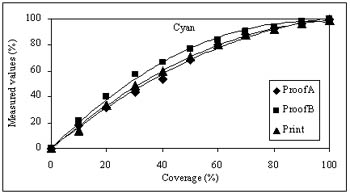
Fig. 1. Dependence of the measured and reference
values.
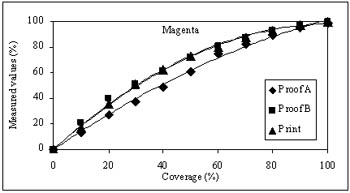
Fig. 2. Dependence of the measured and reference
values.
By spectrophotometric measurements on the instrument Datacolor CS3
(D65/10o) and by transformation equations the values L*a*b*, for the
presentation in CIEL*a*b* colour space were obtained (fig. 5). In
L*Cab* system the differences in lightness and chroma of samples were
presented (fig. 6).
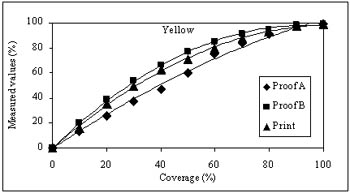
Fig. 3. Dependence of the measured and reference
values.
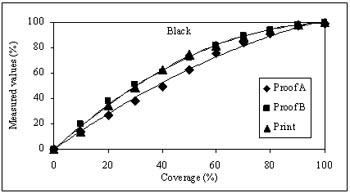
Fig. 4. Dependence of the measured and reference values.
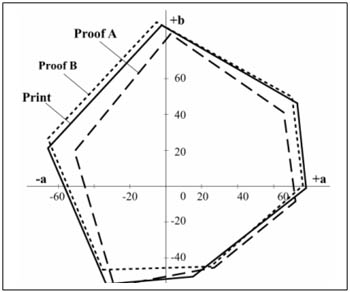
Fig. 5. Colour gamut in CIEL*a*b*diagram.
3. RESULTS AND DISCUSSION
Greater deviation of the proofing device on ink jet technology
principle is visible in figures 1, 2, 3, 4 (proof A). The deviation
is visible mostly on middle tone values on all the colours. The deviations
from the reproduction in offset, on analogue proofing device (proof
B) are very small. The greatest dot gain on offset prints is between
50% and 60% surface coverage. This is the consequence of the mechanical
and optical changes of the screen elements on the printing substrate
(Nilsson et al., 1997).
From CIEL*a*b* colour space it is visible that the proof based on
ink jet technology has considerably smaller colour gamut which can
be presented and it deviates essentially from the reproduction in
offset. Colour gamut is decreased in red, yellow and green area. Because
of that prints obtained by ink jet, do not give satisfactory data
about the colour control. In diagram L*Cab* it is visible that Agfa
proof (proof B) has greater lightness on the places C, M, Y than Epson
(proof A) and offset one. On the places Y the deviation in tone is
visible as well as in CIEL*a*b* colour space.
Fig. 6. Relation of lightness
and chroma in L*Cab* diagram.
It is visible from the obtained results that the analogue proofing
device (proof B) gives reproduction more alike the ones from offset
(smaller deviations). This is the consequence of working principle
of the device, which uses the colour separations of the original on
films to produce proofs.
4. CONCLUSION
The control of colour and text is necessary before the beginning of
long run. The proofing devices enable prevention of great waste quantities
and unnecessary costs of wrong reproduction. Changes in lightness
and chroma among the proofs and offset prints are visible. Ink jet
proofs give somewhat weaker reproduction in relation to the analogue
ones. This is the consequence of different ink application on the
substrate, which does not exclude today’s broad usage of these devices
for reproduction control. Changes in dark tones are visible by visual
evaluation on both proofing devices in relation to the offset. The
prints have decreased contrasts and weaker reproduction of the details
especially on the dark tones on ink jet printer.
In this closed graphic system, ink jet proofing system is used for
imposition control of graphic layout and analog proofing system for
image quality control. By involving CTP system in reproduction, there
is no request for further usage of films. That is the reason why ink
jet proofing system must take over the control of image reproduction
also. This is possible only by using colour management system with
weekly calibration of colour devices.
5. REFERENCES
Agic, D.; Mandic, L. & Gojo, M. (1999). Influence
of Some
Parameters on the Change of Printing Elements Dimension, Proceedings
of 10th International Daaam Symposium, Katalinic, B., pp. 5-6, ISBN
3-901509-10-0, Vienna, October 1999, DAAAM International Vienna, Austria
Hunt R. W. G. (1991). Measuring Colour, Ellis Horwood Limited, ISBN
0-13-567686-X, England
Mandic L.; Agic D. & Ziljak V. (2001). Differences in Colour Reproduction
in Closed Systems and through Colour Management Calibrated Device,
Proceedings of IARIGAI, ISBN 0-88362-401-X, Montreal, September 2001,
Canada
Nilsson, C.M.; Malmqvist, L.; Busk, H. & Kristiansson, P.
(1997). Optical Enhancement of Closely Positioned Screen Dots, Proceedings
of TAGA, Taga office, pp. 11-21, ISBN 14623-5604, Rochester, NY, 1997,
USA
Wyszecki G., Stiles W.S. (1982). Color Science: Concepts and Methods,
Quantitative Data and Formulae-2nd Edition, John Wiley & Sons,
ISBN 0-471-02106-7, Canada